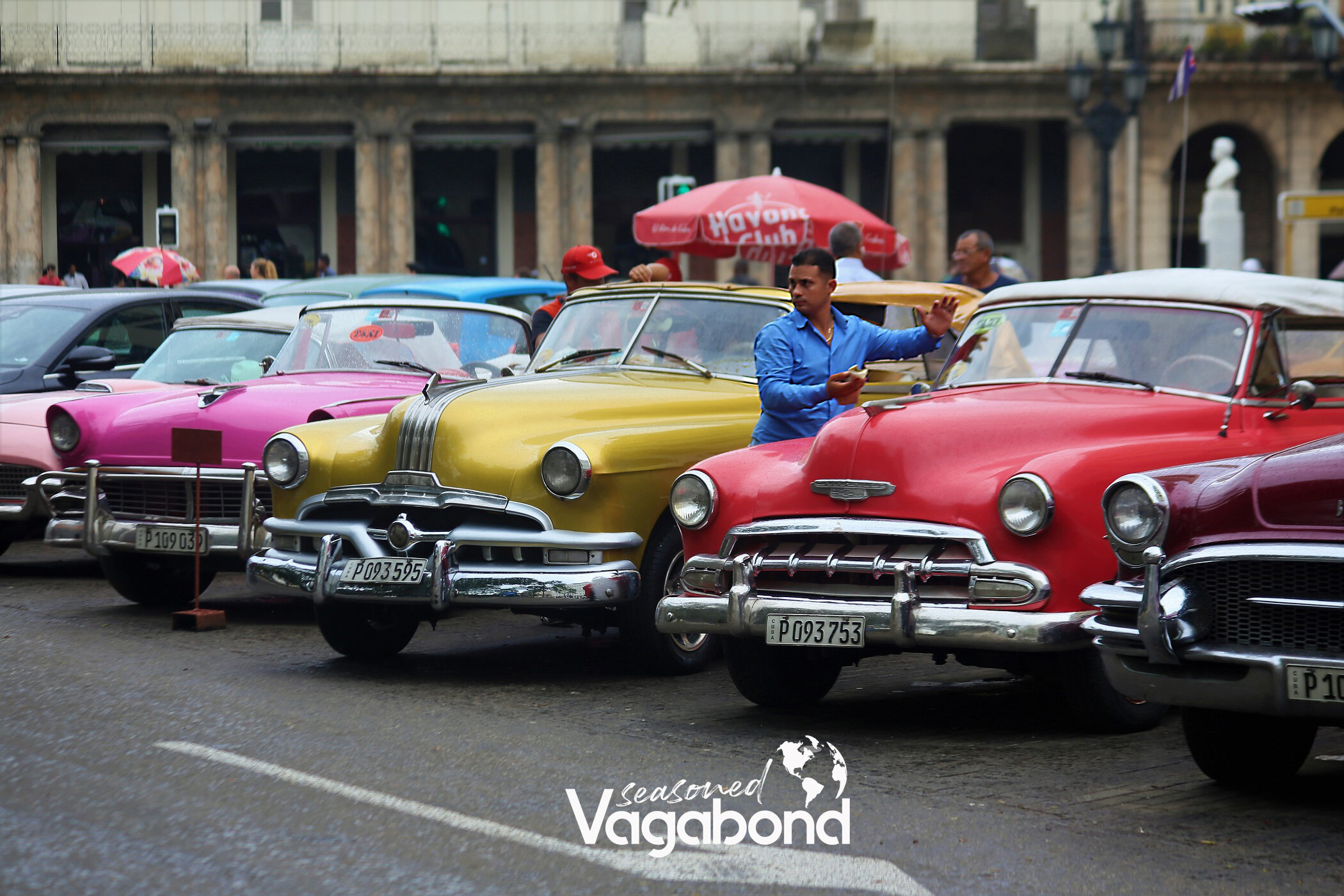
Cars of Cuba
Cuba is a feast of culture and colors. Music, dancing and art intertwine amidst the palette of the tropics on this stunning island.
Yet it’s the country’s classic cars that snag the imagination, defining Cuba along with its celebrated cigars and images of Che Guevara and Fidel Castro.
You don’t have to be a car buff to appreciate the parade of autos from the 1940s and 1950s that navigate the island’s streets and highways. Like a time machine, these distinctive American automobiles link past and present. Some shine with polished chrome and lustrous paint jobs. Others are patched with scrap metal, running with salvaged or cobbled-together parts.
CUBA’S CAR HISTORY
About 60,000 classic American cars are on the island. According to the website www.anywhere.com/cuba/travel-guide, about half of these are from the ‘50s and about 25% each from the ‘40s and ‘30s. They were imported from the United States for 50 years or so, beginning in the early 1900s. When the Cuban revolution ended in January of 1959, the U.S government enacted an embargo. Castro, in turn, banned the importation of American cars and the parts to keep them running.
That’s how Cuba became a living museum of classic cars.
Living is the key word. The old American cars are often kept on the road with parts and pieces for which they were not designed. A mint Chevy Bel Air might be powered by a Soviet diesel engine. Handsome hood ornaments might be crafted from scrap metal. Nostalgic to us, they become Cuban family treasures, passed to the next generation.
The lack of authentic parts for these eye-catching relics has spawned a creative culture of mechanical magic to keep the beauties running. You might spot an old car on blocks on a side street in Havana with two men bent over the engine or repairing the suspension. Sometimes, these self-taught mechanics lack the right tools as well as the needed parts. A junked Russian car might, for example, be dissected for the benefit of an Oldsmobile or Ford. If a 65-year old American car is no longer serviceable, its remnants live on to keep other such cars on the road. Ingenuity, persistence and necessity, in other words, help to preserve Cuba’s unique car culture.
Since 1959, Cuba imported cars such as the boxy Russian-made Lada. Other common cars include Citroens, Nissans or the Chinese Geely. The Cuban government has allowed its citizens to buy and sell cars freely since 2011. Although this has loosened up the car market, new car sales are tightly controlled and very expensive. A Volkswagen might go for $70,000, far beyond the price range for most Cubans who earn about $20 per month.
But visitors to Cuba don’t long for a ride in a Lada, Volga, Geely or a coughing, belching beater. They want to see the sights in a vintage Pontiac, Dodge or Buick, not caring about the heritage of its engine or that the Chevy convertible’s vivid color hides some panel work.
THE RIDE
After our tour group settled into the Hotel Presidente in Havana and enjoyed cocktails on the veranda, we were treated to a slow ride to El Jardin de los Milagros restaurant in one of these automotive showpieces. Choosing which gleaming car in the lineup to ferry us through the city was almost as difficult as choosing a main course. My wife and I, along with another couple, chose a robin’s-egg blue 1956 Chevy Bel Air with an American flag air freshener that dangled from the rear view mirror.
Our driver was friendly and curious about the United States. We didn’t speak Spanish, but his English was serviceable enough to have a simple conversation.
Maylin, our Cuban tour guide, explained that many classic car owners gladly offer their cars and driving services for personalized tours in Havana or around the island.
As on our ride from the hotel to the restaurant, owners typically charge a flat hourly rate. In general, rates vary from CUC25-CUC40 (one CUC is roughly the same as one US dollar). Many of the taxis in Cuba are also antique American cars. You will often see lines of these taxis, as well as privately owned cars, in the areas where visitors frequent. In Havana, this means that popular attractions like Old Havana or the area surrounding the National Capitol are good bets to find a ride.
Of course, the cars are camera magnets and provide a unique photo op before your driver pulls into traffic for your tour. Our driver was proud of his car and laughed when asked about how hard it was to keep it running. “Very different ways. Some Russian parts. Some Chinese. My friends help me when it needs work. Sometimes it is more time working on it than driving.
We cruised past Havana monuments, waving to other smiling riders in other shining cars enjoying a magical evening equally as unforgettable as ours.
As the tropical sun nestled near the ocean, our driver kept a leisurely pace along the Malecon, a five-mile long seaside roadway that offers wonderful sunset scenes. The locals and visitors who linger on the seawall in the evening enjoy two treats: the spectacle of the setting sun and the steady flow of the well-preserved throwback cars that add to the color and culture of Cuba.
Too soon, it was time to step out of our comely time machines and stroll into the restaurant to get a different taste of our Cuba adventure.

IF YOU GO
Travel restrictions to Cuba apply for U.S. citizens. International travel advisories also exist due to the Covid-19 health crisis. For current information about these topics, visit www.travel.state.gov and type “Cuba” in the search bar. There are a handful of reputable travel companies that specialize in educational group tours of Cuba. Shop online for one that meets your needs whenever it is safe to travel.










